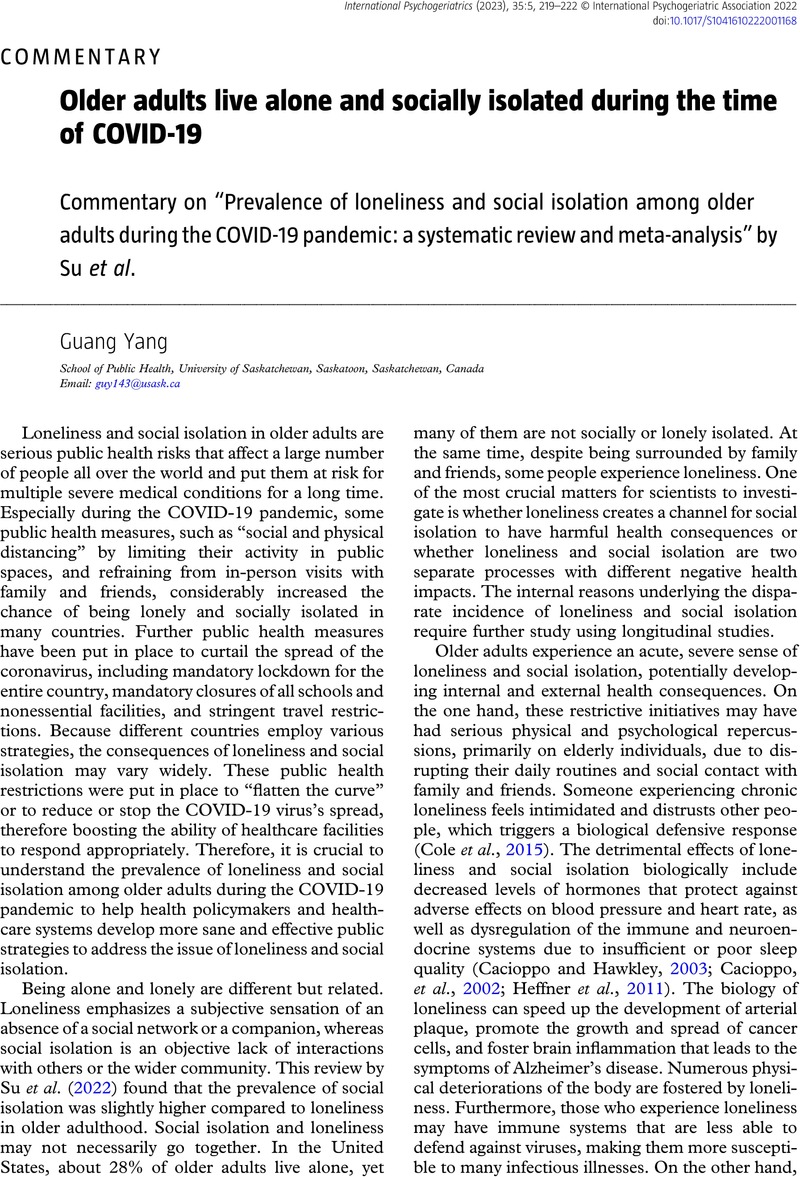No CrossRef data available.
Commentary on “Prevalence of loneliness and social isolation among older adults during the COVID-19 pandemic: a systematic review and meta-analysis” by Su et al.
Published online by Cambridge University Press: 06 December 2022
